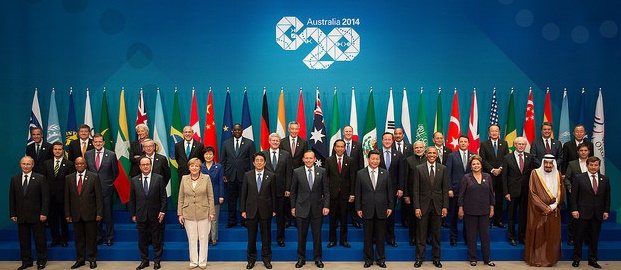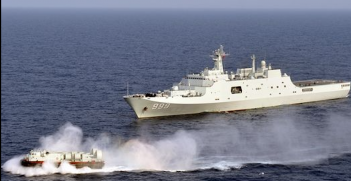A Tale of Two Summits

APEC and G20 are over. How do they compare, asks Tony Makin?
This year the two most significant events for Australia’s international economic relations, the recently concluded 10-11 November Beijing APEC and the 15-16 November Brisbane G20 Leaders’ summits, covered remarkably similar themes. Both summits had higher economic growth as a primary objective and each identified international trade, structural reform and infrastructure as means to achieve it.
The world’s three largest economies – the United States, China and Japan – are joint APEC and G20 members, as are Australia, Russia, India, Canada, Indonesia, Mexico, and South Korea. This means APEC economies account for almost half the G20 grouping and around two thirds of G20 GDP. Since it was founded 25 years ago, APEC’s prime focus has been to promote Asia-Pacific international trade and investment, whereas the G20’s focus has been global macroeconomic management and financial stability, initially at leaders’ level in response to the North Atlantic banking crisis.
APEC’s emphasis on increasing international trade has served the region exceedingly well to the extent that as a region the Asia-Pacific continues to outperform other regions of the world although consensus has yet to be reached on its goal of a Free Trade Agreement for Asia and the Pacific (FTAAP).
Meanwhile, the same cannot be said of the macroeconomic policies advocated by the G20 with its heavy early emphasis on globally co-ordinated Keynesian demand management. The reality is that the G20’s mainly European non-APEC members continuing to drag world growth down some five years after the North Atlantic crisis. If economic policies and economic performance are strongly correlated, the thrust of APEC’s policy initiatives has to be deemed more successful than the G20’s to date.
Policy proposals that stem from macroeconomic theory are more contentious than those arising from the principles of international economics. Whereas advocacy of free trade is founded on a largely settled body of theory dating back centuries to the writings of the British classical economists, Adam Smith, David Ricardo and John Stuart Mill, macroeconomic theory is still fiercely debated in large part due to differences of view about the fiscal policy prescriptions of the English economist John Maynard Keynes dating from the 1930s.
In the five years before the 2008-09 North Atlantic crisis average world economic growth was around 5.0% per annum, but has since averaged 3.5%, and is likely to reach only 3.2 % this year. The G20’s Brisbane Action Plan to lift world economic growth by over 2 per cent in the next five years is therefore well-timed and marks a distinct shift away from Keynesian thinking. Its laudable plan commits G20 economies to expanding production by close to a half a per cent higher per annum on average, exactly the amount Australia’s growth has to rise to return to its long term pre-crisis rate.
Bolstering world economic growth is critical because it has been the single most important reason for freeing hundreds of millions of people from poverty in populous emerging G20 economies like China, India, Indonesia and Brazil. Pro-growth action is also needed to lower persistently high levels of unemployment in advanced economies, most notably amongst youth in Europe, and to push Australia’s unemployment rate back down below 6 per cent. Higher growth is also important for maintaining living standards in economies with rapidly ageing populations.
Of course economic growth literally has to be fuelled and the associated environmental trade-off also has to be addressed, as it will be front and centre at next year’s G20 summit in Turkey.
What the best means to growth are is also subject to often intense macroeconomic debate. In most basic terms, economic growth can be improved via policies that promote aggregate demand or spending, by policies that promote aggregate supply, or some combination of the two. The G20 heavily emphasised the former via fiscal stimulus when attempting to extinguish the firestorm generated by the North Atlantic banking crisis in 2008-09. However, for many economies including Australia, massive fiscal stimulus was the wrong type of extinguisher to use, like spraying water instead of foam on an electrical fire. I discuss the legacy of Australia’s fiscal stimulus here.
The G20’s Brisbane Plan signifies a major and very welcome sea change in macroeconomic policy thinking by the G20 for it shifts focus toward structural reform to raise economies’ productive potential as APEC earlier recognised. The key measures announced in Brisbane include hundreds of country specific measures, including promoting competition, enhancing international trade and boosting female workforce participation (critical for economies like Japan). Quantifying how much the G20’s measures will actually contribute to global growth will however be a major challenge for IMF and OECD economists and involve much guesswork given the inherent noise in GDP measurement.
Infrastructure investment is also expected to contribute significantly to the 2%+ expansion of world growth. This is the most risky element of the package of measures agreed at both APEC and G20. To the extent it gives licence to governments to spend on poorly chosen infrastructure projects, it signifies international policy recidivism since it would simply be unsound fiscal stimulus by another name.
Tony Makin is Professor of Economics and Director of the APEC Study Centre at Griffith University. This is a longer version of an article at The Conversation republished with the author’s permission.





